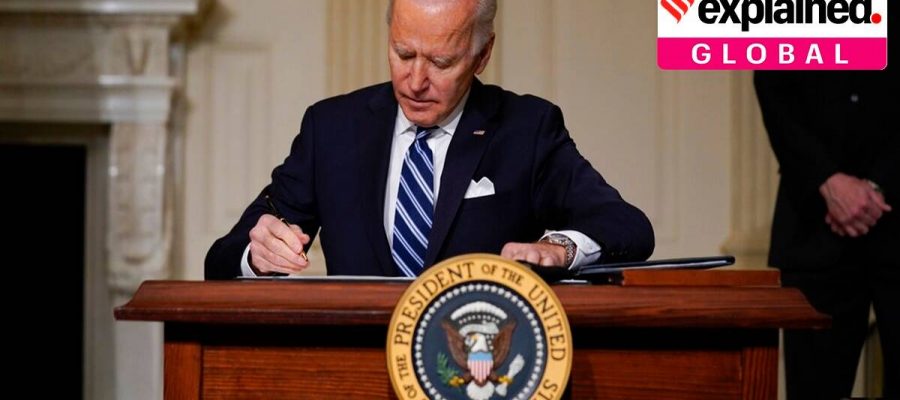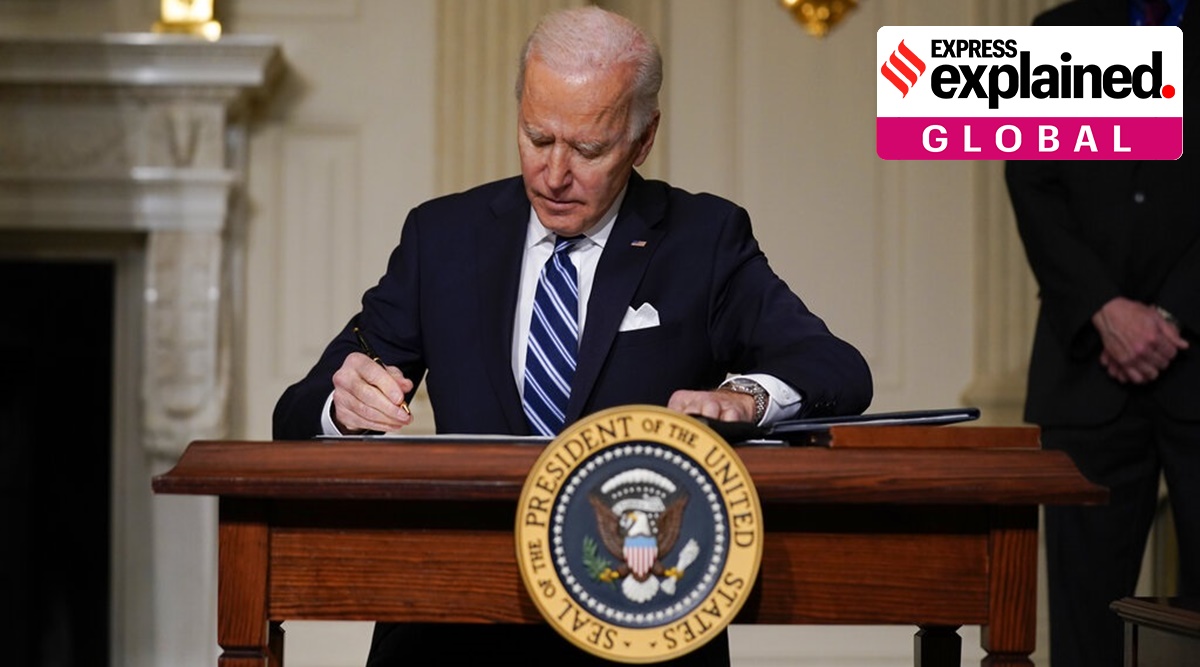While the GND hasn’t released an estimated cost, it is likely much higher than Biden’s $2 trillion infrastructure proposal. The spending will take place over a course of eight years and to offset the costs, Biden’s plan also proposes tax increases, especially tax revenues on multinationals over a period of 15 years.
Last month, US President Joe Biden unveiled his $2 trillion infrastructure plan, promising to fight climate change and create new jobs in the process. Republicans have called it the Green New Deal, however it only takes in certain elements from the GND, a “Congressional resolution that lays out a grand plan for tackling climate change”.
US Congresswoman Alexandria Ocasio-Cortez, who has been the champion in leading the Green New Deal and introduced the first proposals two years back, criticised Biden’s plan saying it is “not nearly enough”. She told NPR that while she was happy to see ideas from the GND being adopted, spending needs to address climate change have to be increased. The latest version of her GND is expected to be re-introduced in the US Congress this week with an expanded scope that looks at lead in city water and pollution in low-income economies.
What is the Green New Deal?
In response to the Great Depression, US President Franklin D. Roosevelt introduced a ‘New Deal’ which included social and economic reforms and public works projects. Taking inspiration, the GND calls for public policy proposals to address climate change, increase investment in renewable energy and resource efficiency, combining Roosevelt’s economic approach to create jobs and reduce economic inequality.
GND was central to the Green Party presidential campaign of Jill Stein in 2016 and has been part of the US Green Party’s platform for over a decade. Bernie Sanders’s 2016 campaign also included a GND.
Democrats acknowledged climate change but didn’t have a concrete plan to address the issue. In November 2018, an environmental group called the Sunrise Movement organised a sit-in in House Speaker Nancy Pelosi’s office demanding a congressional committee to address the environmental crisis. A group of Democrats then worked together with Sunrise and created a proposal for a Select Committee on a Green New Deal.
In February 2019, Ocasio-Cortez and Senator Edward Markey released a 14-page resolution for the Green New Deal. At present, the Green New Deal is a resolution: a roadmap for what America needs to do to address climate change and avoid a global catastrophe. It is best described as a plan for policy changes.
The resolution says the US must take a leading role in reducing emissions, the main goal is to reduce America’s greenhouse gas emissions to net-zero by 2030 along with creating jobs, establishing universal healthcare, high minimum wages and integrating the US through public transport.
The prime goal is to decarbonise the economy by reducing carbon emissions to net-zero by switching to 100 percent renewable energy sources. This includes improvements to the public transport network to include more electric vehicles, and also investments in making the network more dense. It aims to possibly ban the sale of gasoline and diesel vehicles by 2030.
According to reports, buildings in the US produce 40 per cent of the country’s annual carbon emissions. Proposals aim to reduce emissions by implementing a zero-carbon standard for new buildings and funding for retrofitting of existing buildings that are dependent on natural gas for heating and cooling.
The fossil fuel industry employs a large number of people and overhauling those industries would leave people without jobs especially in rural areas. This is why for any new deal, job creation will have to be at the core as it aims to transform the economy and public sector by creating jobs for the lower and middle classes. It would involve investment of trillions of dollars and federal job guarantees.
These jobs will also give voters an opportunity to recognise climate change and do their part for the earth, making the GND a transformational economic policy. The GND wants to make sure that no-one is left behind and hence want to offer protections for people worst hit by historical discrimination — low income communities, people of colour and indigenous communities.
Who all support it?
With the Republican Party largely denying climate change and hesitant on taking action, most supporters are from a progressive wing of the Democratic Party.
Over 100 US Congress members support the GND, various US senators including Bernie Sanders and Elizabeth Warren and even world leaders such as former US vice-president Al Gore and former UN secretary general Ban Ki-Moon have publicly expressed support. Vice-President Kamala Harris was also a co-sponsor of the bill.
It has found widespread support in climate change organisations. In January 2019, over 600 organisations wrote to the US Congress calling for policies to reduce greenhouse emissions. Over 300 local elected officials across 40 US states have also issued letters endorsing the Green New Deal. The Yale Program on Climate Change Communication released a poll data that said GND has strong bi-partisan support among voters.
What is the criticism against the GND?
Republicans say the plan would devastate the economy and lead to tax increases wth the fossil fuel industries witnessing huge job losses.
More rational critics argue that the 2030 goal is too optimistic and a more realistic one would be 2045 or 2050. There are questions about financing the plan that have been raised by Republicans and Democrats alike. Without a concrete funding and investment strategy, the plan is unlikely to pass in either houses especially since Democrats hold only a small majority in both.
Newsletter | Click to get the day’s best explainers in your inbox
Ocasio-Cortez in CBS’s 60 minutes said, “People are going to have to start paying their fair share in taxes” that will contribute to the GND and has suggested tax rates of upto 60% – 70% for the ultra-rich.
Biden vs. GND
During the first US Presidential Debate in 2020, Biden said he didn’t support the GND, but in his climate change plan, the GND will pay for itself.
While the GND hasn’t released an estimated cost, it is likely much higher than Biden’s $2 trillion infrastructure proposal. The spending will take place over a course of eight years and to offset the costs, Biden’s plan also proposes tax increases, especially tax revenues on multinationals over a period of 15 years.
Just as in the GND, Biden’s plan will accelerate actions against climate change by adopting renewable and cleaner energy sources and promote racial equality in the economy. It would also improve broadband services, drinking water and commute times.
Biden’s plan aims to achieve net-zero emissions by 2050 whereas the GND sets it a slightly unrealistic 2030. The bill aims to launch a Climate Conservation Corps which will employ people to conserve public lands, it also sets to expand the US electric vehicle market.
It will also increase spending in R&D and training a new workforce, an idea strongly highlighted in the GND. It shares the same principles with GND when it comes to providing minimum wage to employees, benefits, and freedom to join unions, it doesn’t speak of universal-health care.
The plan is yet to be passed in both houses of the Congress to be signed into a law. In the House, Democrats hold a small majority but only a razor thin majority in the Senate, with Democratic Vice-President breaking the 50-50 vote.
Source: Read Full Article


